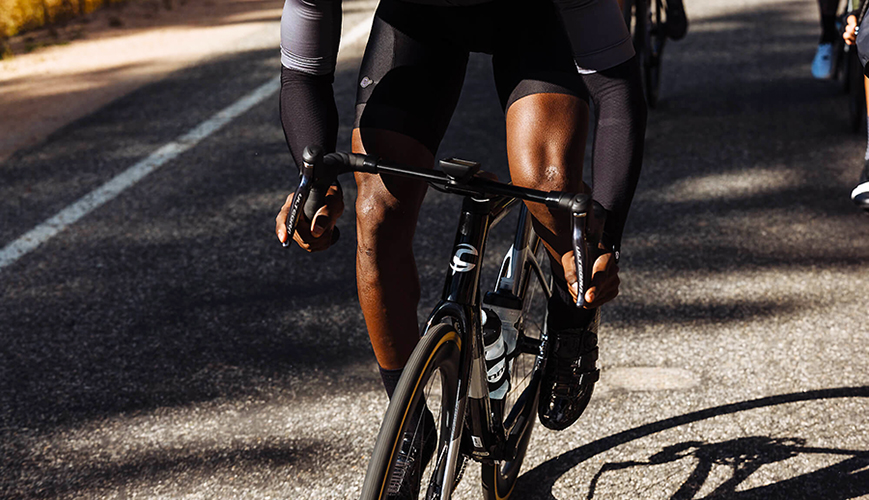Dorel Industries Inc. reported sales at its Dorel Sports cycling segment rose 13.8 percent in the fourth quarter and expects cycling’s momentum to continue after the pandemic is over; however, supply chain constraints continue to curtail top-line growth.
On a conference call with analysts, Martin Schwartz, president and CEO at Dorel Industries, said consumer demand for Dorel Sports bikes remains high, and segment revenue grew for the seventh consecutive quarter.
While its Cycling Sports Group (CSG) and Pacific Cycle posted gains, supply constraints, including shortages of components and containers, limited growth. A change in CSG’s model year to the fiscal year also impacted the quarter, shifting orders from fall/winter to spring/summer. The calendar shift is “making things more convenient for dealers and notably is matching inventory with the key spring selling period,” said Schwartz.
CGS distributes its premium Cannondale and GT models. The Pacific Cycles division focuses on the mass channel with brands Schwinn and Mongoose. Pacific Cycle successfully launched schwinnbikes.com and mongoose.com, which drove incremental sales.
Caloi, its Brazilian cycling business, recorded a record volume of orders in the quarter driven by a loosening of COVID-19 restrictions in Brazil. The segment’s reported revenue was down but up double-digits in local currency.

In the quarter ended December 30, Dorel Sports’ overall revenue increased 13.8 percent to $265.3 million in U.S. dollars. Excluding the impact of foreign exchange, organic revenue improved 15.9 percent. For the year, Dorel Sports’ revenue climbed 14.9 percent and rose to $1.04 billion.
Operating profit fell 80.6 percent to $1.9 million from $9.8 million. Profitability was impacted by product mix, limited container and component availability, higher container costs, and the inability to fill all orders, all of which pressured margins. As well, last year’s fourth quarter included a significant adjustment on import costs of bikes. Excluding restructuring costs, adjusted operating profit was down 75.3 percent to $3.4 million from $13.6 million a year ago. For the year, operating profit increased 72.6 percent to $52.3 million from $30.3 million in 2019, while adjusted operating profit was $57.7 million, up 70.9 percent year over year.
“Demand for bicycles overall is outpacing the ability to supply in both the IBD and mass channels,” said Schwartz. “COVID had been the catalyst which has prompted many new consumers to gravitate to bikes. And, going forward, we see this demand continuing to grow. More and more people riding bikes are becoming the new normal – this is excellent news, yet current issues are affecting the entire bike industry.”
Schwartz said that the shortage of bicycle components is resulting in long lead times, impacting CSG. He continued, “This is putting a cap on supply, although we are working with various factories to mitigate this.”
At the same time, Pacific Cycles is challenged by the lack of available time-specific containers to meet demand, constraining further topline growth. Costs are also rising.
Schwartz added, “At CSG, we’re successfully passing on the increases in freight and components to our customers; however, it’s a bit different at Pacific, where higher FOB costs, freight and foreign exchange, specifically the stronger RMB, are only being partially covered by price increases to retailers. In summary, the long-term view is sustainable higher sales, currently being challenged by a disruptive supply chain and cost increases.”
This summer, Dorel Sports’ new state-of-the-art plant in Almelo, Netherlands, will multiply the current production capacity of Cannondale bikes and e-bikes that allow for an increased focus on premium products. This will serve as well with the increase in demand, particularly for e-bikes, which is becoming a number-one selling product for CSG, mainly in Europe.
Looking ahead, Schwartz said many of the conditions from 2020 still continue.
“COVID is still impacting consumer behavior, and while our sports segments benefit from the higher demand, container availability and higher costs, increasing commodity costs and a stronger RMB are disrupting our supply chain and are increasing the cost of our products.”
He added, “Specifically, demand for Dorel Sports products remains very strong; despite the industry-wide reality of component availability limiting production and higher costs, the year is off to a strong start. Q1 expectations for Sports are for revenues to increase significantly and for adjusted operating profit to be much better than both the prior year and Q4 2020.”
Optimistically, Schwartz, in the Q&A session, said that container shortages are “not getting any worse for the first time in four or five months.” However, he expects it will take several months to catch up to demand once supply becomes in better balance. Schwartz stated, “There is no inventory anywhere at the retail level, factory levels and whatever comes in is going out quickly.”
In the first quarter of 2021, he also noted that Dorel Sports would benefit from easy comparisons due to the pandemic’s initial impact in the early part of 2020. Sales at Dorel Sports were up 2.0 percent in last year’s first quarter. However, comparisons become more difficult in the second and third quarters as year-ago gains totaled 18.5 percent and 22.1 percent, respectively.
The year-ago period also benefited from adequate inventory to fill the demand versus minimal inventory expected for much of 2021. Schwartz added, “That’s the thing the market needs to understand is nobody does. Nobody has whatever was $50 million to $100 million of goods that we can throw into a quarter.”
Photos courtesy Cannondale
















